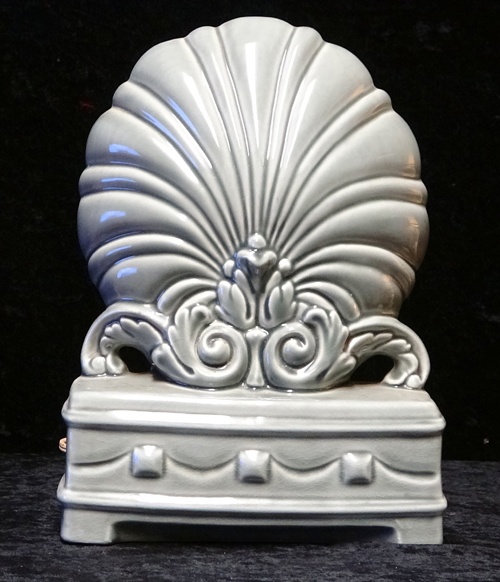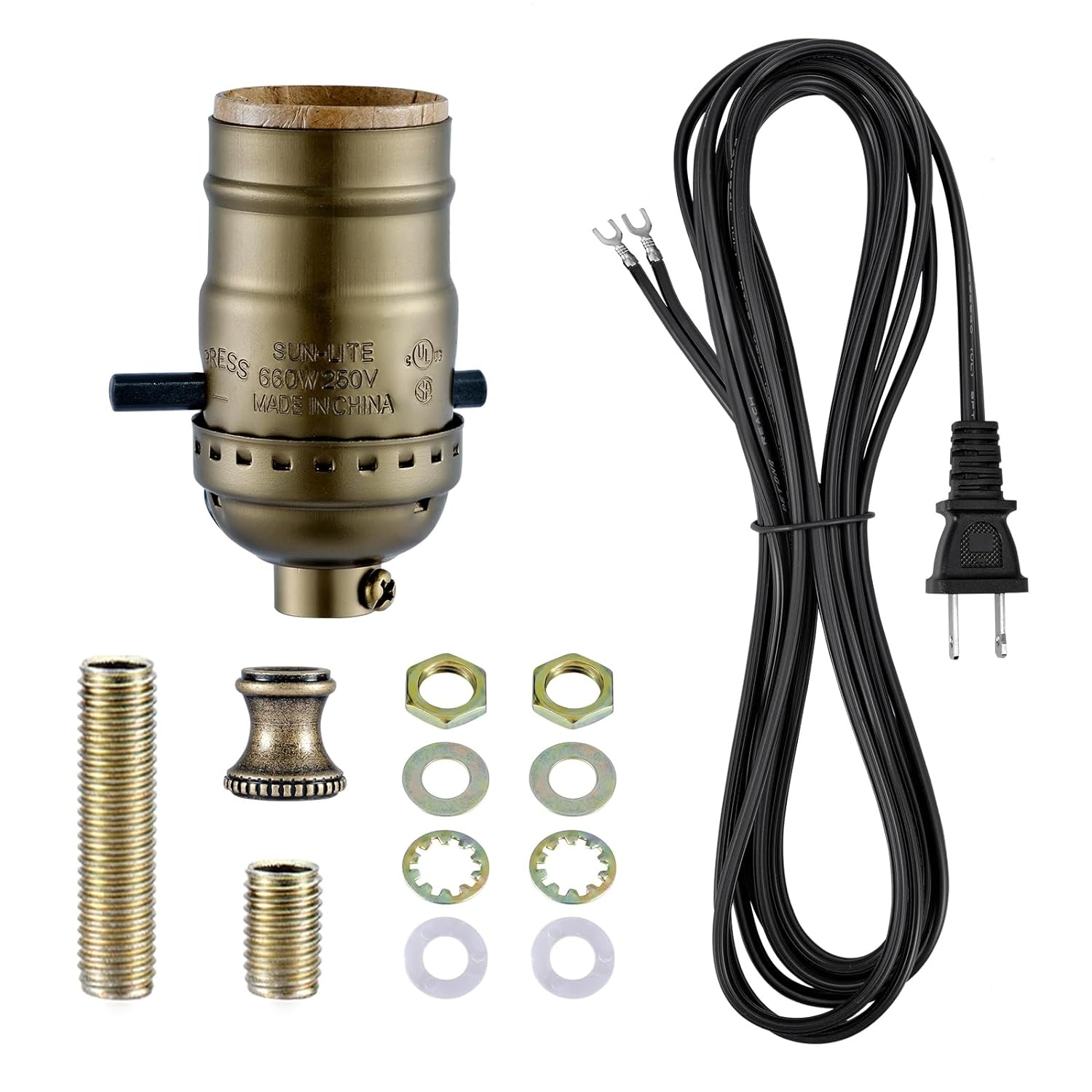📺 What Made TV Lamps So Popular?

A classic mid-century seashell lamp from the 1950s, a perfect example for anyone Collecting TV Lamps.
The quiet charm of mid-century lighting still carries a certain pull, long after the televisions these lamps once crowned have vanished from living rooms. Collecting TV Lamps has grown into a small but steady corner of vintage interest, with decorators, historians, and everyday buyers drawn to the soft light and sculpted figures these pieces offer. They are decorative, practical, and often surprisingly expressive. Many of them were made in small studios, molded in simple ceramic kilns, glazed by hand, and sold in drugstores and department shops during the 1950s. Today they stand as reminders of a period that valued warmth, color, and a sense of personal style in even the smallest household objects.
This article brings together verified historical information, mid-century design context, and practical guidance to help readers understand the appeal of Collecting TV Lamps. The content draws on period-accurate details about materials, wiring, makers, and common shapes from the 1950s. Each section is structured to give clear explanations without speculation, focusing on how these lamps were used, why they were made, and what collectors look for today. The goal is to provide a dependable reference for anyone interested in the history, value, and display of vintage TV lamps.
💡 How TV Lamps Were Used
A TV lamp was once a familiar sight. When the early sets produced bright screens in otherwise dark rooms, manufacturers recommended a secondary light source to reduce eye strain. The result was a lamp that sat on top of the set and cast a gentle glow on the wall behind it. That glow softened the image and added a touch of atmosphere. Rather than build plain utility lights, designers and independent ceramics houses treated the form as a blank stage. Shells, horses, panthers, owls, and cornucopias became common shapes. Some were straightforward, others theatrical. Many were inexpensive, yet they carried the same sense of decoration found in ashtrays, vases, and novelty pieces of the time.
🐚 Styles and Themes Collectors Look For

A classic mid-century double horse-head TV lamp, a bold example prized by those Collecting TV Lamps.
For anyone thinking of Collecting TV Lamps, it helps to begin with the range of styles. Shell designs remain some of the most recognizable. These came in pink, gray, green, blue, and gold-trimmed combinations, usually with an open, fan-like shape and a soft wash of light across the wall. Western themes were also popular. Double horse heads, rearing stallions, and lone riders offered a strong silhouette and paired well with rustic décor. Jungle motifs, including panthers and leopards, brought a dramatic edge, while classical themes such as cornucopias and floral clusters spoke to a quieter taste. The wide variety makes the category rich enough to explore while still manageable for new collectors.
🧼 Condition: What Truly Matters
Condition matters, but not in the same way it does with fine antiques. Most TV lamps were mass-market items, and their value today is tied more to appearance than rarity. A clean glaze, unchipped surface, and intact form are the most important qualities. Because they were meant to hold small bulbs and often included planters or openings, the ceramic edges can be delicate. Chips around the socket or planter rim lower appeal, while hairline cracks tend to turn buyers away entirely. A lamp with honest age, a bit of wear on the base, and even minor crazing can still display well if the overall shape remains strong.
⚡ Wiring, Safety, and Original Parts
Wiring is another point to consider when Collecting TV Lamps. Many pieces retain their original cords and push-button switches, which are part of their charm. At the same time, vintage wiring often shows its age. Collectors differ in their preferences. Some leave the cords untouched for authenticity, while others choose to rewire for safety. Neither approach is wrong. What matters is clarity. When you list or display a lamp, mention whether the wiring is original, tested, or replaced. Buyers appreciate knowing what they are getting and can make their own decisions from there.
Lamp Rewire Kit (Antique Brass Light Socket)

About This Item
Extra Long 12 Foot Cord & Quality Hardware Set Included – A durable 12-foot electric cord with polarized plug fits both table and floor lamp repair projects. Wire ends include U-shaped connectors for simple, secure installation. Hardware pieces match the antique brass finish and give older lamps an upgraded, uniform appearance.
Upgraded Lamp Parts in a Complete Set – Includes push on/off socket, 12ft cord, four washers, hex nuts, one brass pipe coupling, and two nipples (2.5" and 0.8") to handle multiple assembly needs. Designed for both rewiring and full lamp creation.
UL Listed Electrical Components – Both the cord and socket are UL listed, ensuring safe, reliable performance for rewiring vintage lighting fixtures.
Versatile Applications – Ideal for repairing vintage lamps, rewiring old fixtures, creating new lights from vases or bottles, or restoring antique finds. Works with any project requiring threaded openings.
Includes Instructions – Comes with clear guidance for wiring and assembly, suitable for both beginners and experienced lamp restorers.
🏷️ Makers, Markings, and Identification
Identifying makers can be difficult. Many lamps carry no labels at all. Studios such as Premco, Bonnie Lou, Maddux, and Kron did produce marked examples, but a large number of molds were shared or copied between small ceramics shops. Because of this, shape and glaze are more useful guides than brand names. When two lamps look nearly identical, it is often because the same mold circulated through different regional studios. This lack of formal attribution can work to a collector’s advantage. Rather than worrying about confirmed makers, your focus can remain on quality, color, and form.
💲 Understanding Value and Pricing

A black and gold mid-century cutter ship TV lamp, a striking nautical piece sought after by collectors and anyone Collecting TV Lamps.
Pricing varies widely, and the range can surprise newcomers. A simple seashell design may sell for modest amounts because so many were produced, while a detailed Western or jungle theme usually brings more due to stronger silhouettes and a narrower pool of surviving examples. Matching pairs often command a premium, especially when the glazes match cleanly and both lamps remain free of cracks or repairs.
Color plays a large part in value as well. Black panthers and black stallions tend to draw immediate attention because the darker finish highlights the sculpted lines, while pastel shades appeal to buyers looking for softer décor or period-accurate bedroom pieces. Nautical themes, cornucopias, and unusual glazes can also push prices higher, although demand fluctuates. As with most vintage categories, presentation shapes the final outcome. Clear photographs, calm and accurate descriptions, and straightforward language help buyers feel comfortable. Lamps that are clean, intact, and shown both lit and unlit tend to sell more quickly and at stronger prices.
📸 Photographing TV Lamps for Display or Sale
Photography plays a larger role than one might expect. Because TV lamps were designed to cast light, they look better when shown both lit and unlit. A warm glow along the wall reveals how the lamp behaves in use. A second photo without the bulb allows viewers to examine the glaze and sculpted details. Side angles help show depth, while a close view of the socket, switch, or opening provides information that buyers value. If the piece includes a planter section, show its interior as well. Clarity reduces questions and encourages confidence.
🏠 Display Ideas for Collectors
Displaying a collection can be as modest or elaborate as you like. A single shelf with three or four lamps grouped by color creates a harmonious look. Others prefer a broader range, mixing horses, shells, and wildlife for visual contrast. Because many lamps were intended to sit against a wall, they display best on mantels, bookcases, and sideboards. When lit, they supply the same atmosphere that once softened the light of early television screens. That glow is part of their lasting appeal.
✍️ How to Describe TV Lamps Accurately
When writing about them or listing them for sale, it helps to keep the language grounded in what you can see and verify. Describe the shape first, then the color, then the condition. If the lamp works, state that simply. If the wiring is original, note it without judgment. If the piece has no maker’s mark, say so plainly. Buyers respond well to accuracy and honesty. The most appealing descriptions of Collecting TV Lamps rely on clear observation rather than speculation.
🔍 Where to Find TV Lamps
Collectors often enjoy the hunt as much as the lamps themselves. Estate sales, antique malls, and smaller regional shops still produce occasional finds. Some pieces show up in attics or basements, packed away for decades. Others appear in sets when families clear old homes. Online marketplaces carry a steady flow, though the best prices are often found in person. Because the category spans a manageable range of designs, assembling a varied collection is satisfying without becoming overwhelming.
🌟 Why Collecting TV Lamps Endures
The appeal of Collecting TV Lamps lies not only in their nostalgia but in their versatility. They bridge the gap between art and utility, offering both shape and function. They carry traces of the era that produced them, yet they settle easily into modern interiors. Their light is soft and inviting rather than harsh. Their forms are sculpted enough to stand alone as décor. For many collectors, they serve as reminders of homes, grandparents, and early memories of dimly lit living rooms.
For readers in Southwest Iowa, Kilroy Was Here remains one of the more reliable local sources for vintage lighting, including these mid-century lamps. The region’s estate sales and older farm homes often yield pieces untouched for years. If you are nearby and interested in learning more or looking for your first example, you will find that Kilroy offers both information and a rotating selection of vintage TV lamps. That combination makes it a steady place to begin the search, compare styles, and build a collection at your own pace.
Further Reading & Resources
🎓 Tacky Treasures: TV Lamps of the 1950s
🕯️ TV Lamps – Collectors Weekly Lamp Guide

ML Lamp is the owner of Kilroy Was Here. After his 20 years of working in Las Vegas in the entertainment promotions field, Mr. Lamp retired in 2002 from his job to pursue his passion for collectibles. Now as a guest speaker and author he’s living the dream, and sharing his warmth with You.





